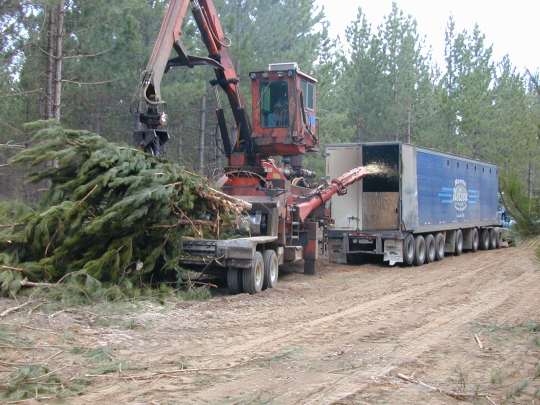Over 500 million dollars has been allocated for the first three months of 2010.
In an effort to increase the usage of renewable energy, the US government has implemented a new program, called BCAP, which will subsidize the collection of biomass in 2010 and 2011. Over 500 million dollars has been allocated for the first three months of 2010, reports the North American Wood Fiber Review. There is much uncertainty about how much additional biomass that will actually enter the market as a result of the program.
Seattle, USA. January 2010. The Biomass Crop Assistance Program (BCAP), a new federal program in the US that is intended to increase the usage of renewable energy by covering some of the costs related to the collection of woody biomass and agricultural residues, has been in effect for a few months and has created much interest, as well as confusion, within the forest industry, reports the North American Wood Fiber Review.
As of December 15th, it had not yet been determined how much funding the program could have for 2010. So far, $517 million has been allocated for the period January 1 through March 31, 2010. Other questions include: whether or not the program will be extended after two years, which biomass categories (e.g. black liquor) will be eligible, and how wood fiber costs for pulp mills and composite board mills may be impacted.
There have been loud protests from both North American and European forest industry organizations who are concerned that the BCAP program will unfairly favor US energy companies and that sawdust and wood chip costs will go up as the result of the program.
With the first payments from the government having been distributed in mid-December, it is still too early to conclude how much the biomass energy subsidy will impact prices for wood chips, shavings, sawdust and hog fuel in the coming months.
The BCAP program is available for producers/sellers of biomass for a period of two years, and both the seller and the conversion facility have to apply to participate in the program. As of December 15, 2009, 306 conversion facilities had qualified. A majority of the registered facilities are located in the US South (37%) and on the West coast (27%).
At this point, it seams unlikely that the BCAP program will have anything near the impact that the black liquor tax credit has had (an estimated 8-9 billion dollars was transferred to the US pulp industry).
It may very well be that in the end, the BCAP program will not add as much biomass to the market as was intended. In fact, most of the biomass supply that will enter the market in the coming years would likely have been available even without the subsidy. The only difference is that biomass consumer may benefit from lower fiber costs and suppliers will increase their profits from the sales of forest and agricultural residues.
Pulpwood and biomass market updates are included in the 24page publication North American Wood Fiber Review. The report, established in 1982 and with readers in North America, Europe and Asia tracks wood chip and pulpwood prices in 15 key markets of the US and Canada.
Contact Information
Wood Resources International LLC
Hakan Ekstrom
info@wri-ltd.com








